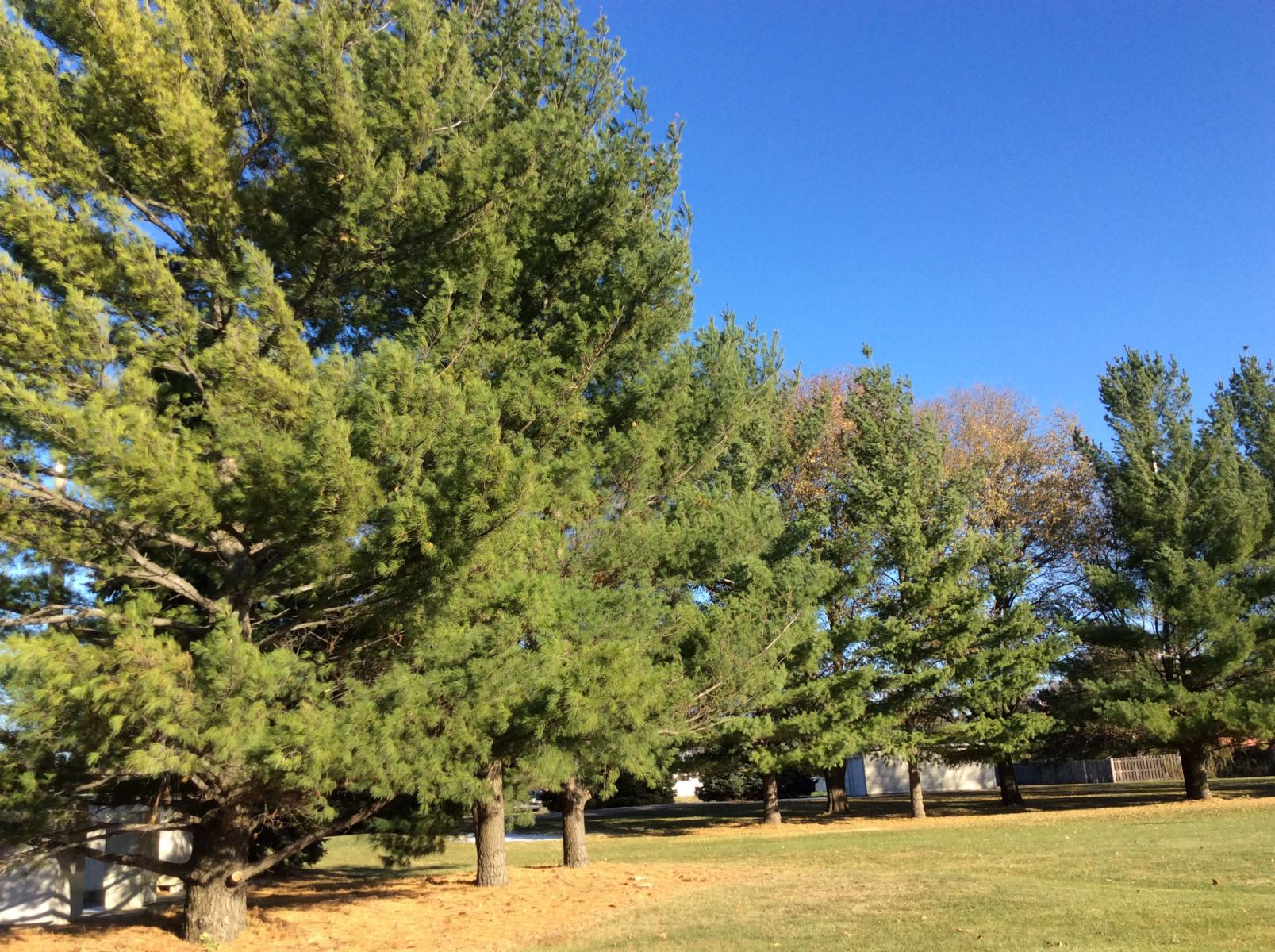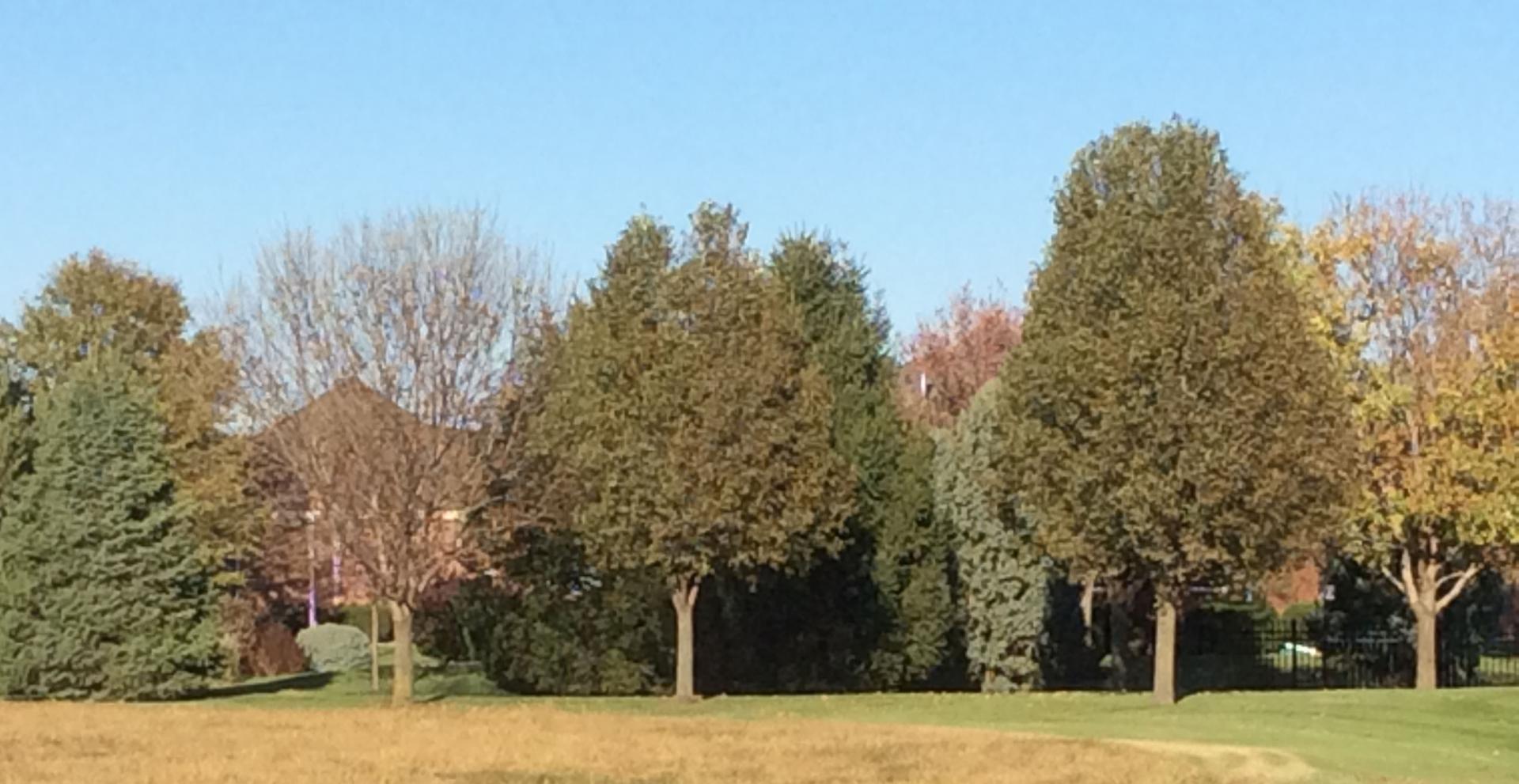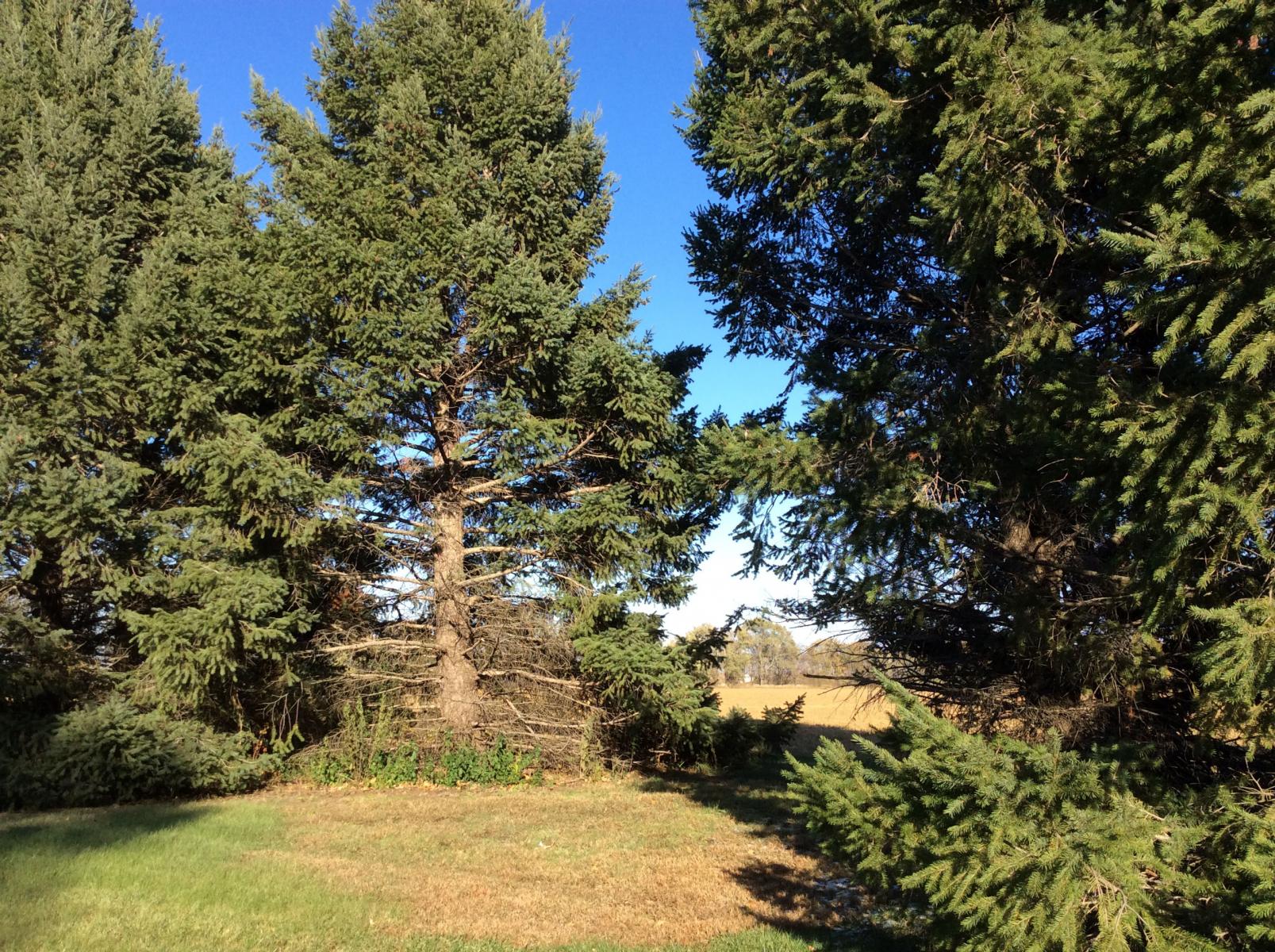
Diseases, insects, drought and age take a toll on windbreak plantings. Planting of all sizes, from a few trees on a city property to miles of trees around a farm, will eventually require tree replacement or renovation. Late fall is a good time to assess your windbreak and order trees for spring planting. Most windbreaks, even those with a few gaps, can be renovated to maintain or enhance their effectiveness.
Fall Windbreak Site Preparation Site preparation should begin this fall for next spring’s plantings. Proper site preparation can mean the difference between a successful tree planting and a failure.
Site preparation should begin this fall for next spring’s plantings. Proper site preparation can mean the difference between a successful tree planting and a failure.
Fall soil preparation is beneficial in several ways. It increases soil capacity to store water from winter precipitation. It also allows the soil to settle and pack better around tree roots after planting and reduces weed and grass competition next spring. And it makes spring planting much easier.
Site Preparation Tips
The best method for site preparation depends on the terrain, existing vegetation, soil type and erosion hazards. Glyphosate works well to kill existing grass, weeds or cover crops and has very little soil residual. Fall weed control can still be done when daytime temperatures are above 50°F, plants have green leaves so can take in herbicides and soils are not frozen. Don't be concerned about the glyphosate harming next spring trees; new plantings can be made in areas treated with glyphosate after a 10-day waiting period.
 Residential sites - Since windbreak plantings are spaced more closely together than trees or shrubs in landscape plantings, it is beneficial to till tree-planting strips. This eliminates grass competition, allowing the new tree seedlings to be more vigorous in the early years following planting, makes mowing easier, and minimizes mower damage to young trees. Drip irrigation can be installed to make watering easier. Finally, after planting apply 3-4 inches of wood chip mulch the entire length of the tree-planting strip.
Residential sites - Since windbreak plantings are spaced more closely together than trees or shrubs in landscape plantings, it is beneficial to till tree-planting strips. This eliminates grass competition, allowing the new tree seedlings to be more vigorous in the early years following planting, makes mowing easier, and minimizes mower damage to young trees. Drip irrigation can be installed to make watering easier. Finally, after planting apply 3-4 inches of wood chip mulch the entire length of the tree-planting strip.
Sloped areas - Till tree-planting strips to prevent unnecessary erosion. Delay disking or tilling until just before planting to conserve soil moisture, control early spring weeds, and reduce the potential for erosion damage.
 Farm plantings - In areas that have been cultivated for crops in the past, little or no preparation is needed. If many weeds are present, the land may require a single disking before planting. Otherwise, plant directly into the previous year's crop stubble. Avoid exposing erodible soils to the wind. If erosion is a threat over the winter, plant a fall cover crop. Next spring, treat the existing vegetation with herbicide, and plant the windbreak directly into the cover crop residue.
Farm plantings - In areas that have been cultivated for crops in the past, little or no preparation is needed. If many weeds are present, the land may require a single disking before planting. Otherwise, plant directly into the previous year's crop stubble. Avoid exposing erodible soils to the wind. If erosion is a threat over the winter, plant a fall cover crop. Next spring, treat the existing vegetation with herbicide, and plant the windbreak directly into the cover crop residue.
On sites with heavy grass sod, preparation begins with herbicide application while the grass is actively growing. The site is then tilled or plowed in the fall and disked the following spring just prior to planting. On relatively flat sites in eastern Nebraska the site should be plowed or disked so soil is in the same condition as if row crops are to be planted.
On rangelands where erosion may be a major concern, kill existing vegetation with glyphosate. To assure complete control, apply the chemicals in the spring, at least two weeks before tree planting and when the grass is actively growing. Planting directly into the dead sod reduces the chance of soil erosion, however, replanting costs may be higher since the matted sod, even though the grass is dead, may cause competition for the establishment of tree roots.
Purchasing Trees
Deciding on plant species and purchasing plants is a critical step in the establishment of a windbreak. This is your best opportunity to avoid plant species susceptible to insect or disease problems. Key points to keep in mind when purchasing tree seedlings include:
- Purchase your stock from a reliable source. Bare-root windbreak tree seedlings are available through your local Natural Resource District (NRD) office. November is the time Nebraska’s NRD offices begin taking orders for windbreak seedlings to be delivered next spring. Over-the-counter tree sales are typically taken in spring until supplies are gone. Locate your local NRD office and look for the Conservation Tree Program.
- Bare-root tree and shrub seedlings can also be purchased from some nurseries. Your seedlings should come from nurseries using locally collected seed or seed from Northern origins. This ensures plants are well adapted to local growing conditions.
- Choose plant material that is suitable for your soils and can survive the environmental extremes of your site.
- Select insect and/or disease resistant plants whenever possible.
- Don't be too quick to buy the cheapest seedlings; they may not be the best value in the long run.
- When ordering trees from your local NRD office, a minimum order of 25 seedlings is required; plant species are sold in bundles of 25 each. If 25 of one species is more than you need, then talk with your neighbors. Maybe you can place a joint order and split the bundles. Plants cost approximately $1.20 cents each, plus tax. You must pick up your tree seedlings when they arrive at the NRD office in spring.
Plant species available vary between NRD office, but commonly include the following. Do not plant Scotch pine or ash.
- Evergreen trees - Eastern white, southwestern white, Jack and Ponderosa pine; eastern red cedar; Colorado blue and Black Hills spruce.
- Deciduous trees – American elm; black and Canada red cherry; hackberry; bur, chinkapin, northern red, white and swamp white oak; cottonwood; and black walnut.
- Shrubs - American plum, hazelnut, redosier dogwood, Nanking cherry, chokecherry, serviceberry, elderberry, common lilac, skunkbush sumac, silver buffaloberry.
Usually, windbreak seedlings are two years old and 12-24 inches tall, with full healthy root systems. Bare-root seedlings must be handled carefully to ensure good survivability and performance.